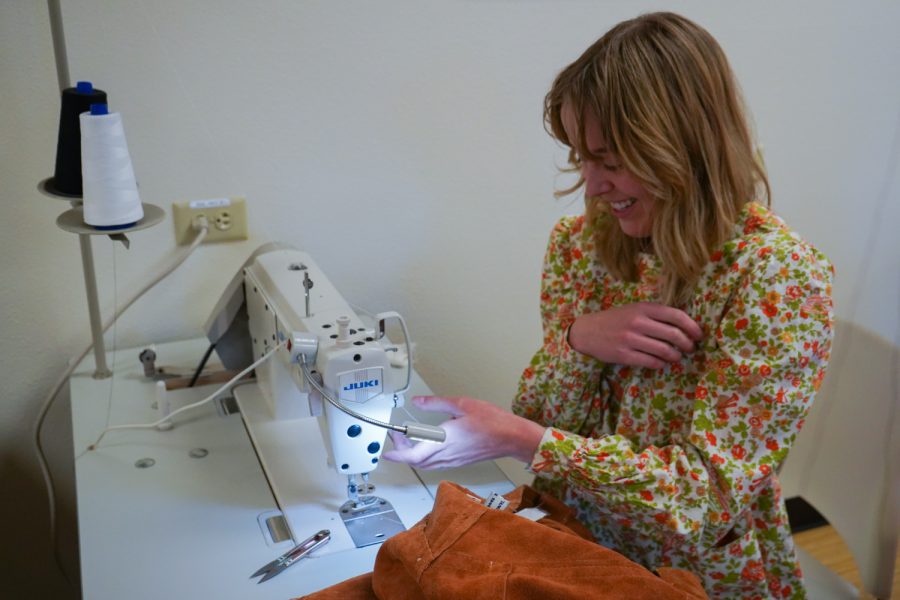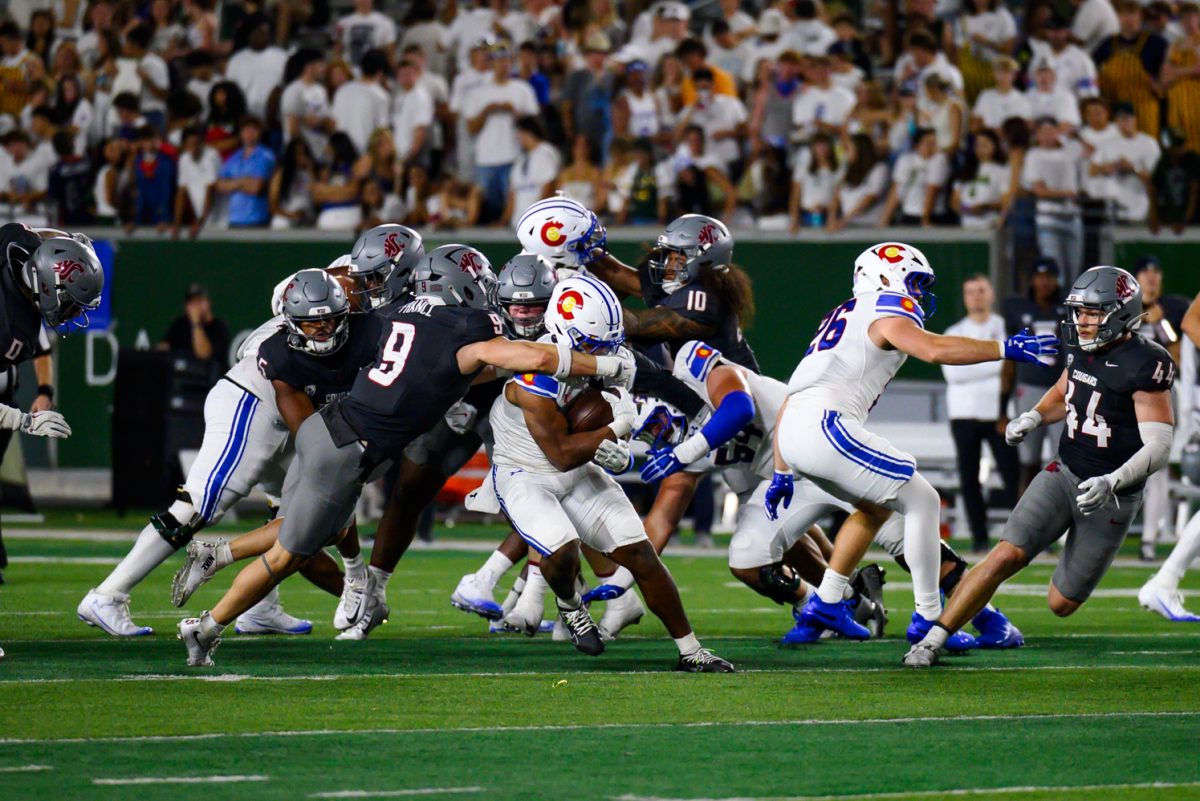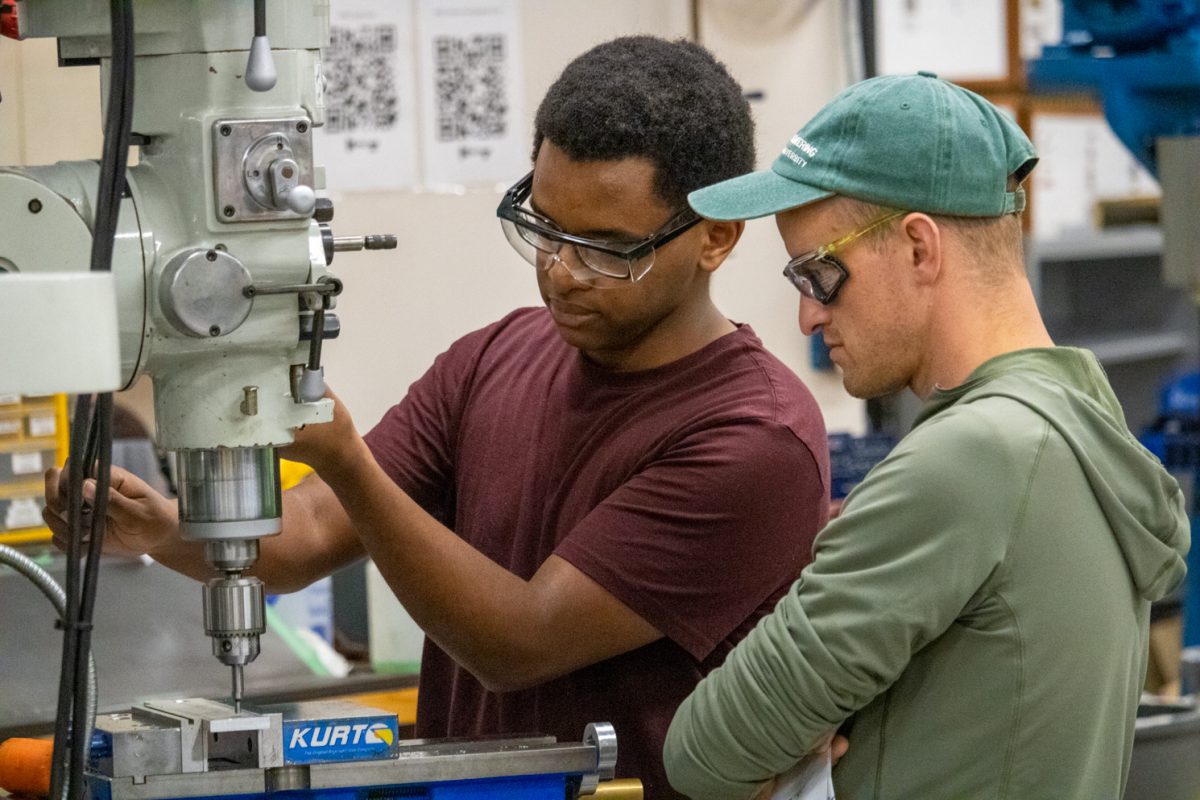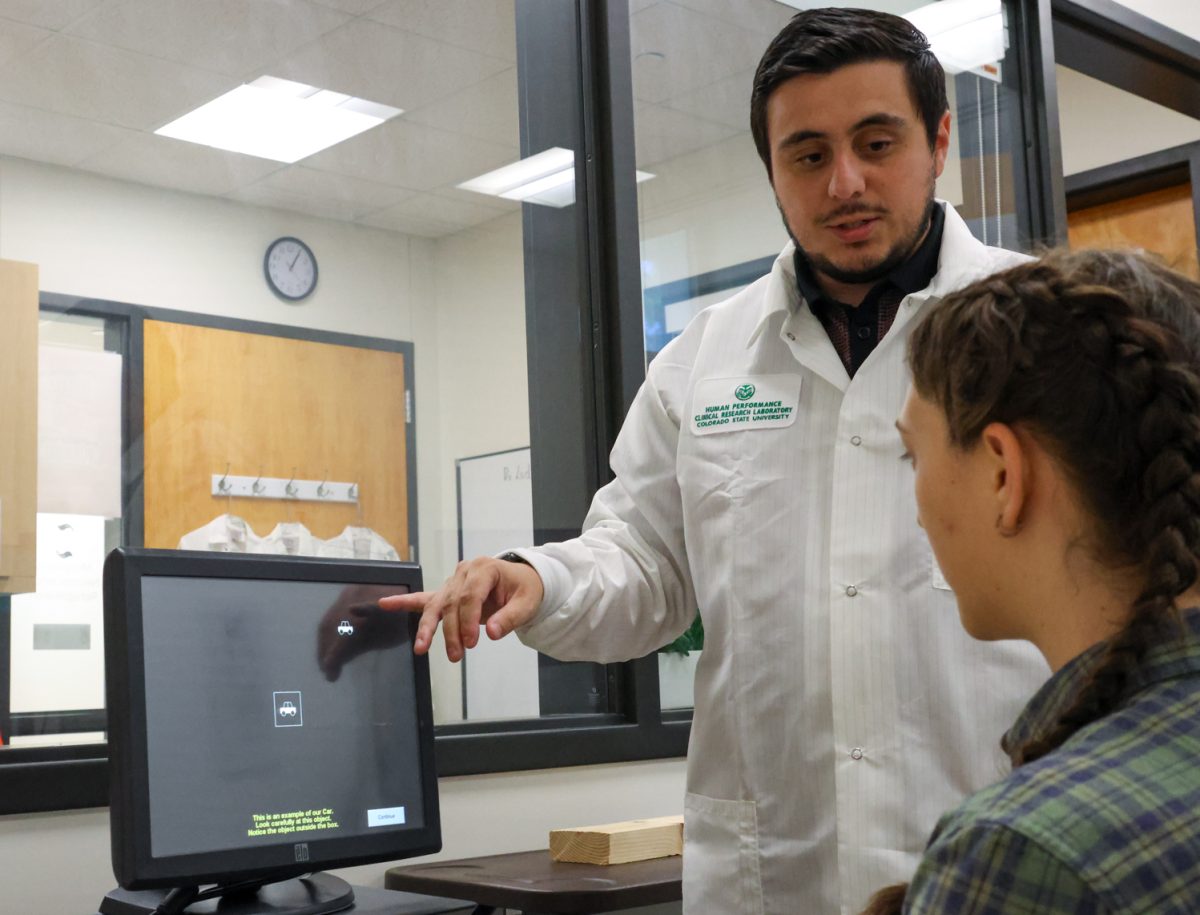By combining cutting-edge technologies and centuries-old techniques, students working toward a Bachelor of Science in Colorado State University’s apparel and merchandising program push the industry forward through their innovative creations and ingenious thinking.
Payton Gonzales, a graduate student in the design and merchandising department, completed his undergraduate education at CSU in apparel and merchandising, having been with the program since 2015. He has witnessed firsthand the implementation of technology into the program.
“When I started in undergrad, we didn’t have the RDC, and so this was a huge step forward,” Gonzales said. “As far as just technology within the program itself, back then in undergrad, the majority of tech that we used was primarily on computers with Adobe software.”
Adobe softwares are still used heavily in the program along with CAD-based platforms to create technical flats, layouts, garment illustrations and textile prints. 3D technologies are also prevalent.
“We use advanced software to teach students how to create digital prototypes, simulate fit and visualize garments in three dimensions before they are physically constructed,” said Kayna Hobbs-Murphy, assistant professor of design and merchandising. “This incorporates elements of computer science and engineering into the design process.”
This includes the Human Solutions Vitus Smart XXL 3D Body Scanner, which is housed in the Inclusive Innovations Laboratory on the third floor of the Gifford Building.
“It goes from the floor to the ceiling, and you step inside of it, and it takes about, like, 10 seconds,” Gonzales said. “There (are) four cameras inside of this room that you step into, and in about 10 seconds, I have over 130 points of measurement on your body.”
Hobbs-Murphy’s own focus is anthropometric research: the science of defining a person’s physical size, form and functional capacities.
“My own research in 3D facial anthropometrics and its implications for product design, such as respirator fit, bridges STEM fields like ergonomics, biology and health sciences with apparel design,” Hobbs-Murphy said. “This type of work directly informs curriculum components that focus on understanding the human body for better product development.”
The major’s curriculum also explores textile science, including pattern-making and apparel production methods, including formulas and algorithm to mathematically draft patterns. Students also participate in labs to understand fabrics’ thermal conductivity, strength and abrasiveness, all of which influence how various fabrics play on the human body.
“(There are) textiles that can detect germs within the vicinity and change color based off of it or textiles that can utilize … circuitry within fabrics to send signals across the body that could then do certain things,” Gonzales said. “On a micro level, a lot of the fabrics that we wear actually have remarkable abilities inside of them that you don’t think about, but once you put them on your body.”
Garment production has also become more sophisticated with the introduction of advanced technology used in the field, including CLO 3D and Optitex, which allow for refined virtual prototypes, and digital pattern-making platforms including Gerber AccuMark.
Students also have access to the apparel design studios outfitted to meet their design needs and the Textile Science Learning Laboratory, where students explore fabric durability, performance and material chemistry.
“Hands-on experiments build a strong foundation in textile knowledge, essential for roles in sourcing, product development and quality assurance,” Hobbs-Murphy said.
Additionally, the program focuses heavily on moving the fashion industry to a more sustainable future with integrated technology usage.
“Students use technology to assess and reduce the environmental impact of apparel production,” Hobbs-Murphy said. “This includes life cycle assessments of garments and calculating carbon footprints, fostering a science-based understanding of sustainable practices.”
Merchandising and the commercial side of the fashion industry are also incorporated into the curriculum to prepare students for a well-rounded future. This includes exploring e-commerce platforms, retail data visualization and market research.
Looking into the future, the department has begun to investigate artificial intelligence’s use in the industry.
“As part of our curriculum’s forward-thinking approach, students explore using AI to generate garment patterns and designs,” Hobbs-Murphy said. “They also critically analyze and correct AI-generated outputs, which sharpens their problem-solving skills and reinforces traditional pattern-making knowledge.”
Even with all of the technology utilized, it is still the students enrolled in the program who are the lifeblood of the program.
“One of the program’s most remarkable strengths is the community of passionate and supportive students,” Hobbs-Murphy said. “They create an inclusive and collaborative environment, fostering creativity and innovation while encouraging each other to excel. This sense of camaraderie is a defining feature of the program, helping students thrive both academically and personally.”
Reach Katie Fisher at science@collegian.com or on Twitter @CSUCollegian.










